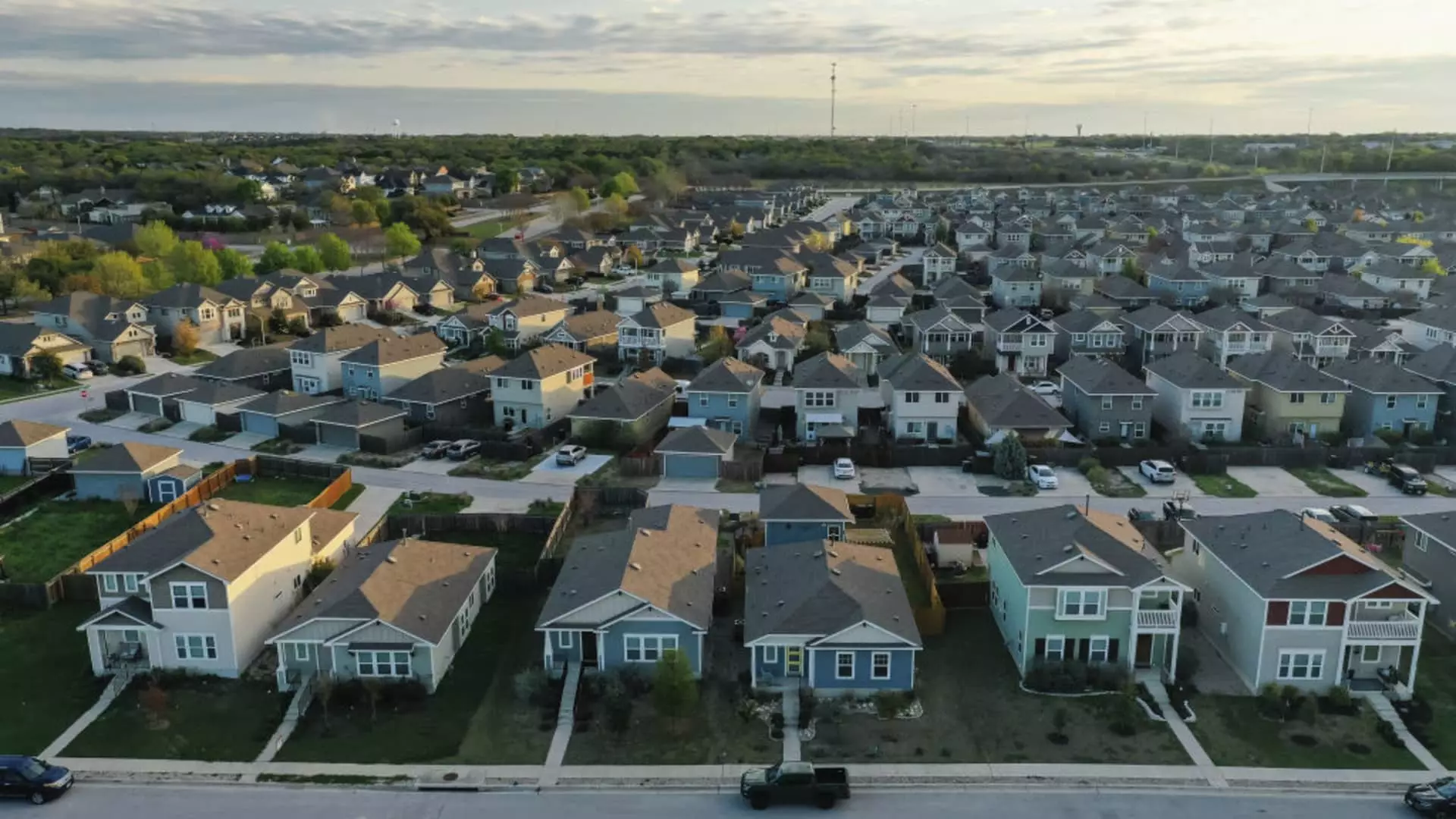As the spring housing market approaches, prospective homebuyers are displaying a notable reluctance to engage actively. Despite an increase in available listings, a combination of stagnant mortgage rates and continuing rises in home prices has substantially dampened enthusiasm. The dynamics present a complex landscape for those looking to purchase homes, casting a shadow over what is typically seen as a bustling season for real estate.
Recent observations reveal that mortgage rates have seen only minor fluctuations. According to data from the Mortgage Bankers Association (MBA), the average contract interest rate for 30-year mortgages has dipped slightly to 6.97%, yet this decrease has not been substantial enough to stimulate buying activity. The persistence of elevated mortgage rates continues to inhibit potential buyers who are grappling with affordability challenges. For many, the average purchase loan size has steadily risen, now reaching nearly $447,300, marking a record since late 2024, signifying that while credit may be accessible, the cost of borrowing remains a deterrent.
Weak Demand Signals Trouble Ahead
The ramifications of these trends are evident in mortgage application statistics. Recent reports indicated a 4% decline in new mortgage applications for home purchases, a stark contrast to the same period last year where demand was relatively stable. This decline, coupled with soaring home prices, reflects a significant shift in buyer sentiment. Especially troubling is the revelation that today’s mortgage application rates are a staggering 39% lower than pre-pandemic levels in February 2019. Such a drop underscores the gravitational pull of rising market costs leading to decreased buyer interest and affordability.
Sales Performance: A Historical Context
The current housing market activity is reminiscent of conditions not seen in nearly three decades. With home sales operating at near-historic lows, the narrative becomes one of caution and stagnation. The rise in average listing days to sell homes, now at 54 days, suggests a broader hesitation among buyers and sellers alike. Furthermore, while sellers have increased the instances of price reductions—up to 15.6% from last year—many continue to resist lowering their asking prices, revealing underlying confidence in retaining value or waiting for improved market conditions.
Interestingly, the number of homes for sale has seen a 25% year-over-year increase, although this is still significantly below levels observed in January 2019. This uptick in supply can be attributed in part to homes remaining on the market longer. Therefore, as sellers become more flexible with pricing—albeit struggling to meet buyer demand—potential opportunities may arise for buyers who can navigate the continued high price environment. However, the overall context remains one of cautious optimism, with market fluctuations reflecting a blend of economic pressures and buyer hesitance.
As we delve deeper into the spring season, the housing market poses challenges that demand careful navigation from both buyers and sellers. With mortgage rates fluctuating alongside home prices, it remains to be seen whether buyers will regain confidence or if the market will continue to languish in its present state. The combination of high prices, stagnant demand, and extended listing times creates a unique predicament that may linger, necessitating adaptive strategies for homebuyers and sellers alike. The coming weeks will be crucial in determining whether a shift in momentum is possible as spring progresses.

